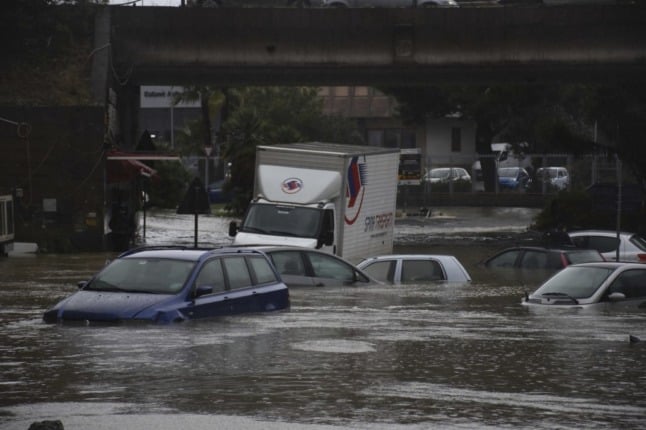But behind the scenes lies security so drastic that the entire town of Taormina has been cordoned off, its residents forced to wear badges to move around streets shorn of all tourists.
“The town is unrecognisable, the streets are empty and most shops are closed,” says Antonella Calopardo, a local resident.
Italian authorities are taking no chances to protect the leaders of the world's seven richest democracies, who have gathered in Taormina to discuss the thorny issues of climate change, trade and worldwide security threats.
Close to 3,300 soldiers, thousands more police and some 250 planes, helicopters, drones and navy ships have been deployed.
'Business is bad'
Locals going in and out of the jet-set town that once played host to the likes of Oscar Wilde, Ernest Hemingway and Elizabeth Taylor are forced to wait at airport-style checkpoints to be scanned, their cars and scooters methodically searched.
At one of the entrances, a man put his grocery shopping on an X-ray belt, the security guard squashing down a salad before it went through.
Of the 4,000 journalists staying outside Taormina, the few allowed in have to pass security hours before the actual event they have to cover.
Once inside, delegates and reporters stroll through the cobbled streets or whizz around in golf buggies, vendors at empty tourist shops looking quizzically on.
“Business is bad considering the season but what can you do?” says one cafe worker near an ancient Greek theatre where the orchestra of Milan's La Scala opera house played for leaders.
“My customers today are mainly policemen and diplomats.”
Nearby, a few children ride their bikes, their security badges dangling around their necks.
Soldiers and police stand guard on every corner in what has become a fortress town.
“I'd like it to finish. The sooner it ends, the better,” said Giovanna Corvaia, a resident.
But for some locals hoping to get a glimpse of US President Donald Trump, the whole event is intriguing.
And they hope that the world spotlight on Taormina will attract even more tourists in future.
“It's worth some sacrifices,” said Luigi Scaffidi, 62.
Protests go unseen
Journalists and activists are parked further down from Taormina in the beachside resort town of Giardini Naxos.
Greenpeace staged a protest there on Friday, erecting the phrase “climate justice now” on the beach, complete with a replica of the Statue of Liberty wearing a life-jacket.
But very few people were there to see it given the smothering security all around.
A larger-scale protest was scheduled for Saturday, forcing some shops to close owing to fears of unrest.
But whatever the scale of the demonstration, the leaders themselves won't see it from their picturesque hilltop bunker.
By Marianne Barriaux and Ellen Hasenkamp




 Please whitelist us to continue reading.
Please whitelist us to continue reading.